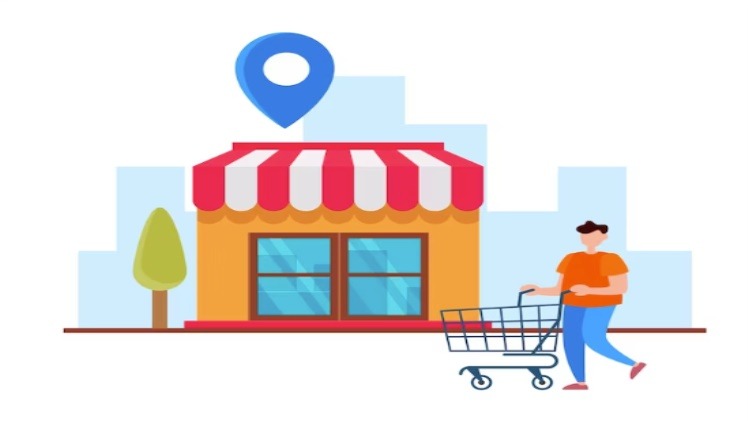Never earlier has it been harder to compete in the history of online shopping. Fiercely competitive industries can be dominated by new brands, and consumers can quickly transfer their loyalty from one brand to another.
Products can become immensely popular overnight. How can an e-commerce brand be built successfully? This is where Shopify helps to create your brand to the next level. You must take an emotional approach to branding to connect with your audience.
With images, messages, and other techniques, you show individuals what your company is about and how you can assist them.
While some steps may need to be repeated as you pivot or develop your brand, it is crucial to consider them all when developing your brand identity.
Hiring the top Shopify Development Company is the perfect course of action if you want to lay the groundwork for building your company’s brand. Let’s see how Shopify helps create your own brand from scratch in 7 steps.
1. Choose a name for your business:
What does the meaning of a brand name mean? Depending on the business you like to begin, you might make the case that your name matters significantly or less.
As you said, a brand is more than just a name. Characteristics, actions, and reputation give your brand identity’s name actual market significance.
Your company’s name is one of the crucial choices you must make as a small business owner.
Your brand’s logo, URL, marketing, and trademark registration will all change if you want to go down that route. Choosing a store name that is hard to imitate and even harder to connect to rival brands is best.
If you plan to grow your product offerings, consider choosing an available company name rather than one centered on your product category to simplify pivoting.
2. Examine your target market and competitors:
Before creating a business brand, you should thoroughly understand the current market, including your competitors and potential customers. There are various strategies for this:
Examine the direct and indirect competitors that surface after conducting a Google search for your product or service category.
Look up relevant subreddits and pay attention to discussions and product recommendations from your target demographic.
Find out which brands the customers who make up your target market prefer while shopping in your sector.
Examine the social media pages or profiles your target market frequents and finds attractive. To understand how your target market might browse and buy products, go shopping either physically or virtually.
3. Establish the tone of your brand:
Since they will dictate how you address your audience, your brand’s tone and voice are very important. Your brand tone and voice must be established if you like to entertain your audience and maintain a positive brand experience for your clients.
With your clients, you will only sometimes come into contact physically. This suggests that, unlike physical enterprises, you won’t have the opportunity to communicate your brand’s values and voice directly.
Your website, social media sites, and product descriptions can all be used to convey with your customers.
Your brand voice can be established by analyzing your target market. Understand them. How do they use language? You can choose your brand voice more quickly if you pay attention to that.
4. Choose typography:
Typography is only about the typefaces you select and how you use them together. The fonts you choose and how you combine them may significantly impact your client’s experiences.
When selecting typefaces for your website, simplicity is the rule of thumb. Use a maximum of two typefaces for your website. For body text and headings, you can use several fonts.

5. Keep the product’s quality in mind:
These days, the newly established e-commerce companies that are garnering the most engagement and traction are the ones that begin by manufacturing and selling a single product rather than a wide range of products.
A brand that consumers trust can earn their complete commitment. Quality control may become an issue when producing a broad range of products for the same market.
By focusing more intently, you can pay closer attention to your goods’ general quality and reputation.
With Shopify website development, you can safely start branching out into other product categories to target the same demographic and niche once you have mastered, scaled, and developed a strong client base for one product.
6. Leverage your brand for business growth:
Branding helps give your business a consistent identity. To achieve this effect, your brand must be combined into every part of your business, including your packaging. In your company, this fosters a sense of unity.
When your brand is compatible across all of your items, even when you launch new ones, it is easier to retain clients loyal to your brand.
Additionally, it creates a solid brand story about your identity, paving the road for every interaction your customers will have with your brand.
Buyers typically desire to know more about the aims and ambitions of a company. They regularly act in this manner to ensure that they uphold specific corporate ideals.
When you share your brand story with customers, they are more inclined to think of you and think highly of your business.
7. Your e-commerce brand can expand with Shopify:
Shopify is certainly one of the most famous eCommerce platforms in use today. Every online business desires to stand out and Shopify helps brands achieve just that by assisting them in creating shops that correspond with their branding.
Shopify’s features and third-party plugins can help companies with well-known brands grow their social media following and sales.
Guide on Shopify eCommerce Development Stores help, you may increase your company’s brand value. With more customers, you may generate more revenue and profit.
Final thoughts:
A strong brand is essential in the competitive business world of today. If your branding is weak, you won’t be able to connect emotionally with your audience.
Give your customers a meaningful connection point through brand development. With the help of Shopify store development, customers distinguish themselves from the competition, and possibly customers grow to love your brand.
Author Bio: Maulik Shah is the CEO of BiztechCS, a development company. He often takes the front seat in the company’s development projects, because he enjoys solving problems through technology. When it comes to writing for any blog, his contribution is priceless. Maulik ensures that his interaction with development is frequent enough, and his industry knowledge is ever-evolving so that he can share it. Despite his packed days, Maulik’s door is always open and he is generous with sharing this knowledge and experience.



